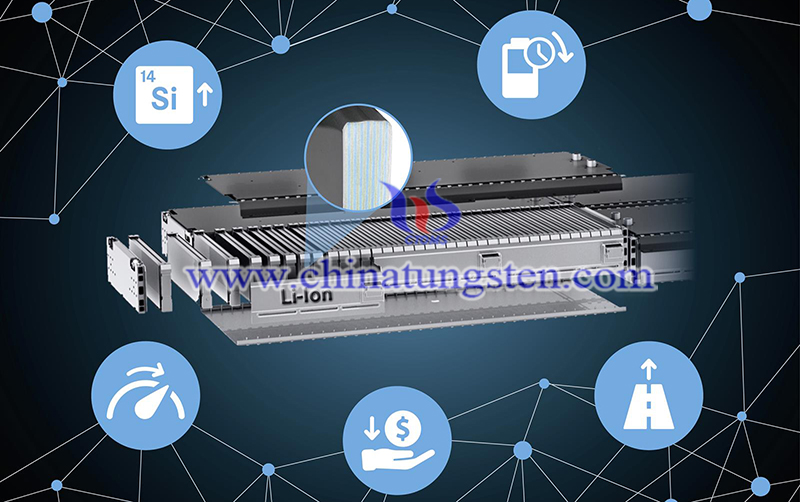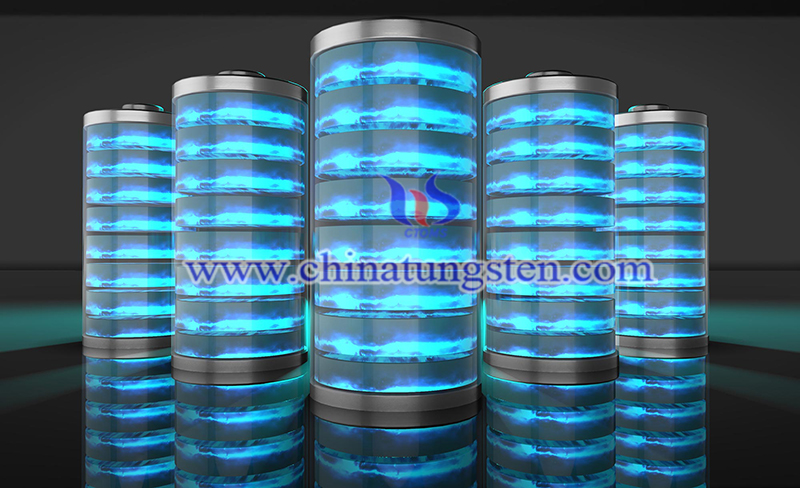Nano Tungsten Oxide-Based Materials for Next-Generation Lithium-Ion Batteries
- Details
- Category: Tungsten's News
- Published on Thursday, 16 July 2020 21:38
Nano tungsten oxide-based materials have become a research hotspot in the field of anode materials for next-generation lithium-ion batteries amid the main use of graphite being as a cathode material for commercial Li-ion batteries. In CATL, two years after going public, it took a significant position on the Growth Enterprise Market (GEM). On July 7, the total market value of the CAT reached 431.7 billion.
CATL has become the business card of China's power battery. The company is one of the world's four largest power battery companies with international competitiveness. The other three are LG Chem, Samsung SDI, and Panasonic. In power batteries, they account for more than 60% of the global installed capacity.

The main business of CATL includes power Li-ion batteries, energy storage lithium-ion batteries, etc., and the layout of nickel ore and lithium ore resources through shareholding, forming an integrated industrial chain in the field of lithium-ion batteries. Power battery is the "heart" of the new energy electric vehicle-accounting for 30% to 40% of the total vehicle cost. Therefore, it is no wonder that power batteries are an emerging industry with a potential market of hundreds of billions of yuan.
One of the key components of Li-ion batteries is anode material. The quality of the anode material affects the overall performance of the lithium battery directly. Graphite and its modified model are currently commercially available anode materials for Li-ion batteries. Although graphite is currently mainly used as a negative electrode material for commercial Li-ion batteries, it is undeniable that it has restricted the development of Li-ion batteries, because of its low specific capacity (theoretical capacity is only 372 mAh/g), and poor rate performance.

Therefore, there are many types of anode materials for Li-ion batteries that are in the research and development stage. For example, nano tungsten oxide-based materials in transition metal oxides - the research hotspots in the field of anode materials for next-generation lithium-ion batteries. This is because transition metal oxides such as nano tungsten oxide-based materials have the advantages of relatively low prices, wide sources, and large specific capacity. For example, purple tungsten oxide nanopowder can enable lithium batteries to achieve ultra-fast charge and discharge, as it helps electron conductivity and lithium diffusion.
If developers want to commercialize the nano tungsten oxide-based materials for lithium-ion batteries, the problem of its longevity must be addressed. At present, nano tungsten oxide has been used for the production of photocatalytic materials, petroleum catalysts, electrochromic materials, gas-sensitive materials, etc., as a functional material.
- Tungsten Manufacturer & Supplier, Chinatungsten Online: www.chinatungsten.com
- Tungsten News & Prices of China Tungsten Industry Association: www.ctia.com.cn
- Molybdenum News & Price: news.molybdenum.com.cn
- Tel.: 86 592 5129696; Fax: 86 592 5129797; Email: sales@chinatungsten.com



 sales@chinatungsten.com
sales@chinatungsten.com